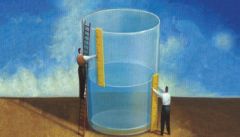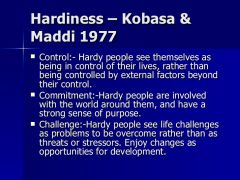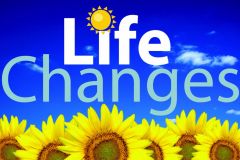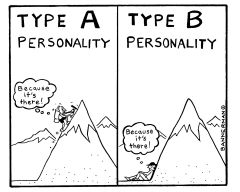![]()
![]()
![]()
Use LEFT and RIGHT arrow keys to navigate between flashcards;
Use UP and DOWN arrow keys to flip the card;
H to show hint;
A reads text to speech;
10 Cards in this Set
- Front
- Back

Rahe et al. (1972)
|
Rahe et al. (1972) gave the Social Readjustment Rating Scale to 2,500 sailors to calculate the number of life changes experienced in the last 6 months. The participants were measure for seven months and all stress-related illnesses were recorded. A significant positive correlation of 0.118 between SRRS scores and medical scores was found, supporting the idea of a link between life changes and vulnerability to illness. (weak relationship)
|
|

Kanner et al. (1981)
|
Kanner et al. (1981) devised a hassles scale of 117 negative daily items and an uplifts scale of 135 positive items. One hundred participants were then studied over 12 months and it was found that daily hassles correlated with negative psychological symptoms and were a better indicator of illness than life changes. It was also found that life changes (e.g. divorce) led to daily hassles (e.g. having to cook, shop and clean for oneself) which then led to vulnerability to illness, suggesting that life changes and hassles interact to affect health levels.
|
|

Kiecolt-Glaser et al. (1995)
|
Kiecolt-Glaser et al. (1995) found that slight wounds given to female participants who had the stress of caring for senile parents took longer to heal than those without such stressors. This finding was backed up by other measures of immune system functioning which suggests that prolonged chronic stress reduces immune system function.
|
|

Cohen et al. (1993)
|
Cohen et al. got 394 participants to rate stress levels and complete questionnaires on stressful events experienced in the past year and depression. These scores combines to give a 'stress index' score. 82% of participants came infected with common cold virus. After seven days, most stressed participants were most likely to get a cold as their immune system was thought to be weaker. A higher stress index score correlated significantly with chances of developing a cold.
|
|

Friedman & Rosenman (1974)
|
Friedman & Rosenman (1974) measured the personalities of over 3,500 healthy middle-aged males over a 12-year period, with those scoring highly on impatience, competitiveness, motivation for success, frustration at goals being blocked and aggressiveness under pressure, being labelled as Type A personality and low-scorers as Type B personality. Twice as many Type A personalities developed cardiovascular disorders, suggesting that personality is a risk factor in developing stress-related illness and that psychological factors exert a biological effect on the body, as the negative biological effects of stressors are mediated through psychological personality factors. Thus stressors are not harmful themselves, it is how individuals perceive and react to them that negatively affects health.
|
|

Kobasa et al.(1985)
|
Kobasa used questionnaires to assess control, commitment and challenge. He also assessed levels of physical exercise and social support. He found high scores on characteristics of hardiness, physical exercise and social support were all associated with lower levels of stress related illness. Hardiness had the greatest protective effect. |
|

Marmot et al. (1997)
|
Marmot et al. (1997) used questionnaires and health screenings to find that 7000 UK civil servants (over 5 years) with low job-control were three times more likely to have heart attacks than those with high job-control, implying that low job-control is harmful to health. All participants were free from heart problems when starting the study. However, Marmot found no correlation between workload and stress-related illness, which contradicts Johansson’s (1978) findings. As Johansson focused on jobs that required continuous concentration, his findings may be a more valid measure of high workload.
|
|

Holmes & Rahe (1967)
|
Holmes & Rahe (1967) examined the medical records of 5,000 patients, finding 43 common life changes which occurred prior to onset of illness. These life events were given ratings relating to how stressful they were perceived to be by 100 judges, the resulting scores being called life change units (LCUs) which made it possible to calculate the amount of stress an individual experiences in a given amount of time. Individuals with high LCU scores for the preceding 12 months had a heightened likelihood of experiencing illness in the following year. For example those with LCU scores of over 300 had an 80% chance of developing illnesses like diabetes, heart conditions and cancer. The research suggests that it is possible to measure stress objectively as an LCU score and that life changes are linked to stress-related illnesses.
|
|

Taylor et al. (2000)
|
Taylor et al. (2000) found that acute stress produces the ‘flight or fight’ response in men but the ‘tend and befriend’ response in women because women produce more oxytocin, a biochemical that produces relaxation and nurturing. This suggests a gender differences in the activation of the sympatho-medullary pathway.
|
|

Rosenman et al.(1976) |
Rosenman used a sample of around 3000 American men to place them into categories of 'Type A' or 'Type B' using structured interviews. Followed over 8.5 years (longitudinal study). Smoking, drinking and obesity factors were controlled for. He found there were 257 heart attacks with 69% of these within the 'Type A' group. Only 31% within 'Type B' category. |

